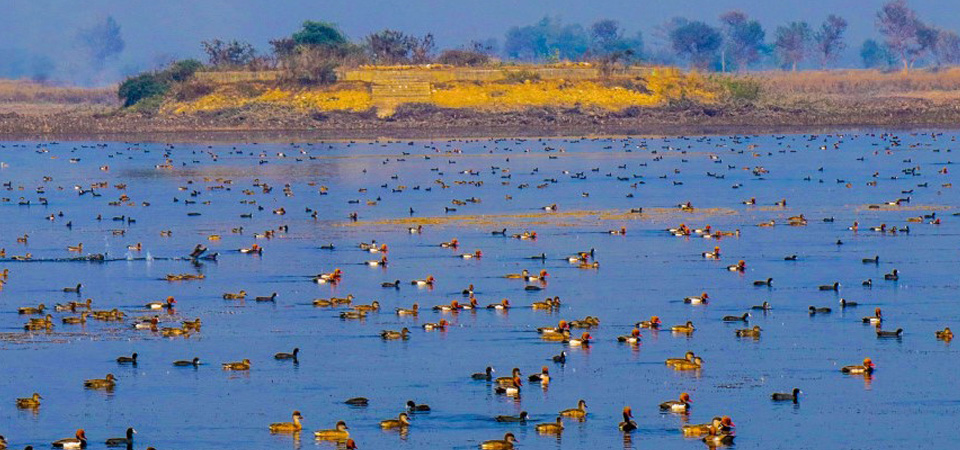Census of winter birds to begin soon

By A Staff Reporter
Kathmandu, Dec. 30: The national count of aquatic birds in major wetlands of Nepal is going to be held from January 1 to 16, 2022.
Wetland International will lead the count in coordination with national partner Himalayan Nature.
Prominent ornithologist Dr. Hem Sagar Baral, national coordinator for Midwinter Asian Waterbird Census on behalf of Wetland International, said that over 60 wetland sites would be surveyed for aquatic birds and as many as 300 volunteers would be mobilised across the country.
Aquatic birds are monitored and counted every year to find out the distribution and condition of their habitat, to update the numbers and also to increase public awareness. “Volunteers, bird watchers, locals, stakeholders and conservation organisations will be participating in the census. It is totally a volunteer task,” Dr. Baral said.
According to Dr. Baral, who is also the country director of the Zoological Society of London said that binoculars and telescopes and some cameras would be used in the count at around 60 sites across the country within three weeks.
Various wetlands, lakes, ponds and rivers from east of the Koshi Tappu Wildlife Sanctuary to Shuklaphanta National Park in the far west will be covered.
“We have standard methods to minimize the double counting, so there is less chance of repeating of birds,” he said.
Some 60,000 birds visit Nepal during winter from various parts of the world including Siberia, Russia, China, Mongolia, as well as Europe, Korea, and Tibetan regions and spend their winters in the wetland with favourable weather, safe habitat, and in grazing areas.
There has been no significant decline in waterbirds in the last five years in numbers but there might be slightly increasing and decreasing in different wetlands, Dr. Baral said.
Chitwan Valley is suitable for waterbirds while Jagdhishpur Reservoir, a single site holds the highest number of waterbirds so far. The lake carries more than 20,000 individuals every year. However, the number of waterbirds has been declining in the past two years in Jagdishpur.
The Department of National Parks and Wildlife Conservation and the National Trust for Nature Conservation are the main supporters for the counting, Dr. Baral said.
They also mobilise their staff through subordinate parks, reserves and conservation areas to assist in the enumeration of protected areas and surrounding intermediate areas.
During the census, habitat conditions, current crises and the general community's perceptions will be recorded, which will also help in the formulation and implementation of policies required for the conservation of birds and their habitats.
The main aim of the programme is to obtain information on the waterbirds' population on an annual basis at the wetlands in the region during the non-breeding period, to monitor wetlands status and conditions and to increase interest of the citizens on the wetlands and waterbird conservation.
The waterbird census started in 1987 in Nepal.
Recent News

Do not make expressions casting dout on election: EC
14 Apr, 2022
CM Bhatta says may New Year 2079 BS inspire positive thinking
14 Apr, 2022
Three new cases, 44 recoveries in 24 hours
14 Apr, 2022
689 climbers of 84 teams so far acquire permits for climbing various peaks this spring season
14 Apr, 2022
How the rising cost of living crisis is impacting Nepal
14 Apr, 2022
US military confirms an interstellar meteor collided with Earth
14 Apr, 2022
Valneva Covid vaccine approved for use in UK
14 Apr, 2022
Chair Prachanda highlights need of unity among Maoist, Communist forces
14 Apr, 2022
Ranbir Kapoor and Alia Bhatt: Bollywood toasts star couple on wedding
14 Apr, 2022
President Bhandari confers decorations (Photo Feature)
14 Apr, 2022











